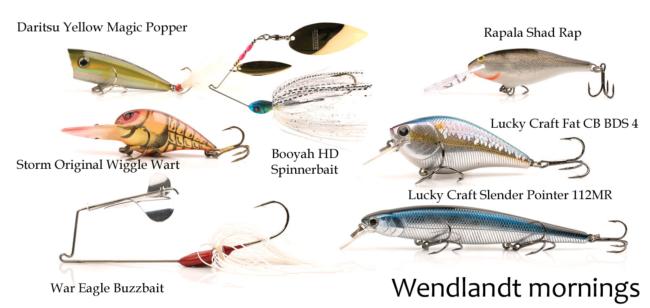Rise and shine
Take advantage of the early morning bite all season
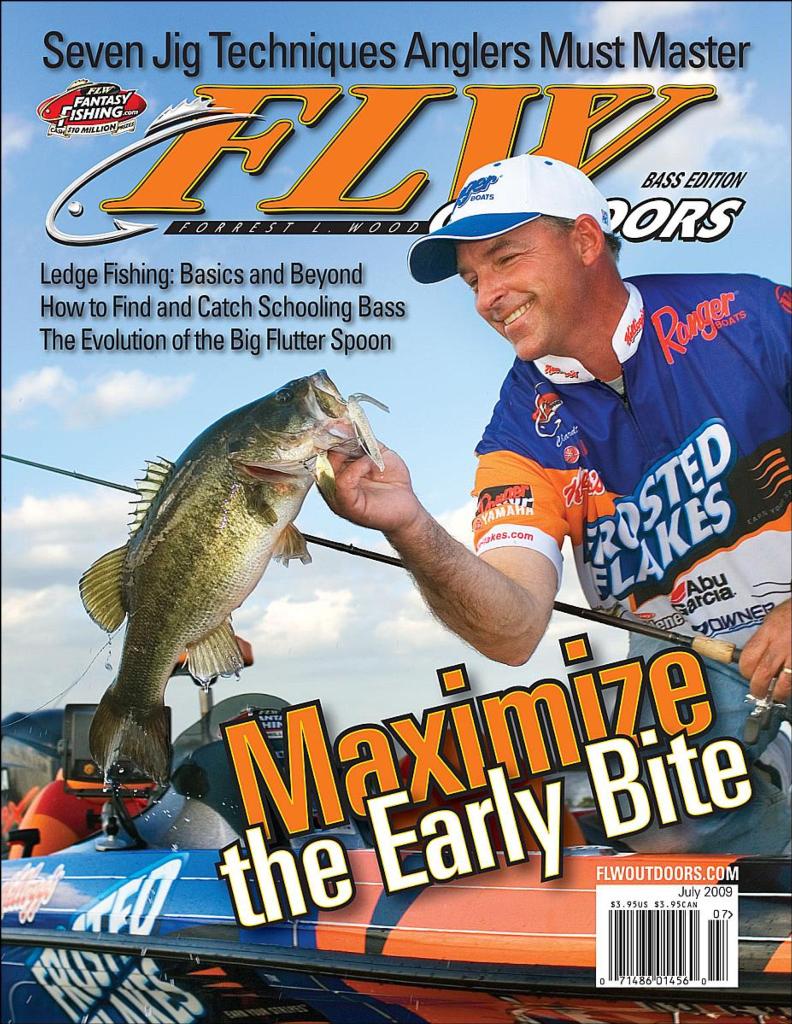
————————————–
Editor’s note: This is just one article from a recent issue of FLW Outdoors Magazine, which publishes both a Bass Edition and a Walleye Edition. To learn more about the magazine and how to subscribe, click here.
————————————–
Nothing compares to the sense of urgency that overwhelms a tournament angler at daybreak. Last-minute nerves and a recheck of the game plan has the mind pulled in every direction while jockeying for position among a flotilla of bass boats. But the thing that really accelerates the anticipation is the itch to make the most of the morning bite.
Catching a few bass early settles nerves and allows for a positive state of mine. And there’s always a chance to quickly stuff the livewell with heavy bass.
“The bite is usually best first thing in the morning, all season,” said Frosted Flakes pro Clark Wendlandt of Leander, Texas, who has about $1.5 million in winnings from FLW Outdoors tournaments.
And isn’t the stereotypical angler an early riser, leaving the comfort of a bed at home for the dew or frost of a lake sunrise? Well, stereotypes aside, if you aren’t rising to the occasion of catching early morning bass already, it’s about time to get up and get after them before the sun is high in the sky.
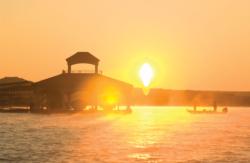
The morning bite offers short-term patterns that allow anglers to cover water and capitalize. The “rise” is the easy part. Now it’s time to “shine.”
Grass lakes
Obviously, in grass lakes, the lives of fish are dominated by grass. Cover abounds, and fish within it can find everything they need to survive. So targeting grass at sunrise is the ticket. In lakes that have grass, but are not absolutely dominated by it, fish have options. However, the grass, just by being there, will have some effect on their lives.
During the prespawn phase in a grass lake, milfoil, hydrilla and other aquatic grasses will be beneath the surface. Walmart FLW Tour pro Dan Morehead of Paducah, Ky., picks off early bass with a 3/4-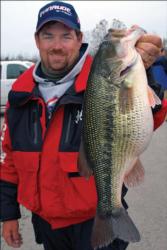 ounce Bill Lewis Rat-L-Trap, focusing especially on inside grass edges that form after a reservoir rises from low winter pool.
ounce Bill Lewis Rat-L-Trap, focusing especially on inside grass edges that form after a reservoir rises from low winter pool.
“I cast over the edge of the grass at a 45-degree angle,” the pro said. “I run the lure fast and rip it through the top of the vegetation for reaction strikes.”
Morehead wields a 7-foot, medium-action American Rodsmiths graphite baitcasting rod matched with a Shimano Calais reel and whatever line keeps his rattling lure running at the right depth. If the grass tops out only a few feet under the surface, 20- or 25-pound monofilament will help make the lure run high. If the grass is 10 feet deep, sinking fluorocarbon line as light as12-pound-test helps get it down.
This strategy paid off for Morehead in January 2003 during the Walmart FLW Tour event at Lake Okeechobee. On the first morning of the tournament, he cast a Yo-Zuri Rattl’n Vibe on 17-pound monofilament to a patch of submerged hydrilla the size of a house. The lipless rattler put a 16-pound limit in the livewell in less than an hour. When the morning bite quit, Morehead switched to flipping bulrushes and culled to more than 21 pounds of bass, all with the security granted by a strong morning bite.
During the spawn, however, the situation changes. Until the sun gets high, it may not be bright enough for sight-fishing. So instead, blind-cast to bedding areas. Morehead’s main lures for this include a wacky worm, Heddon Zara Spook, Rebel Pop-R and spinnerbait. And the same lures still work immediately after the spawn, on what are typically small, fry-guarding males.
Summer is the season when morning fishing varies most between lakes dominated by grass and those that simply have significant grass beds. If bass relate mainly to aquatic vegetation throughout summer, try running visible grass edges with a big popper, a topwater stick bait or a spinnerbait – Morehead prefers a 1/2-ouncer with tandem willow-leaf blades.
But if it’s a reservoir where most big bass leave the grass and relate to creek- and river-channel ledges in deeper water, Morehead goes straight to the drops in the morning. There, he might hit a home run by 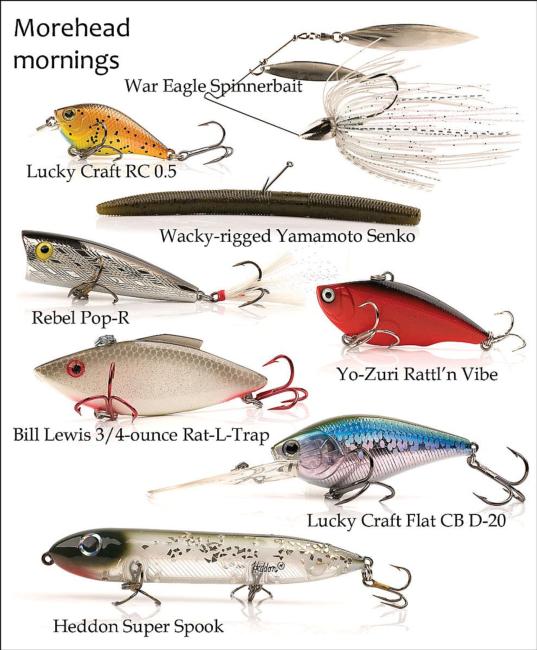 power-fishing big-lipped crankbaits and 1-ounce spinnerbaits that he can slow-roll as deep as 20 feet.
power-fishing big-lipped crankbaits and 1-ounce spinnerbaits that he can slow-roll as deep as 20 feet.
By fall, it is time for a reversal. Morehead’s morning plan is to follow bass into bays where they relate to shallow grass and gorge on shad that have moved up. Small, shallow-running crankbaits like the Lucky Craft RC 0.5 can effectively seine grass edges and not only produce a good morning bite, but catch bass all day.
Clear lakes
Morning tactics for fishing clear lakes can also be divided by season. But there is a rule of thumb Chevy pro Luke Clausen of Mount Juliet, Tenn., follows in any season, on any lake.
“I never fish deep first thing in the morning, even on clear lakes,” Clausen said.
The easiest bass to catch are generally those that feed shallow during the first hour or two of daylight. That includes some of the biggest fish in the lake, which will be on the last course of their nighttime feeding binge.
Before bass move into spawning areas in spring, focus on steep rock or gravel banks near flats. There, Clausen starts with one of two lures nearly 100 percent of the time. One is a green-pumpkin Berkley PowerBait Slim Shaky Worm on a 1/8-ounce shaky-head jig. The other lure is a 1/2-ounce Megabass Vision One-Ten jerkbait with a chrome body, a white belly, and a green, blue or black back.
When fishing the shaky head in clear water, Clausen slings long casts to avoid spooking bass.
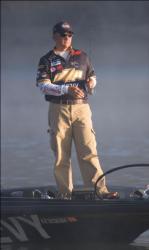
“I cast parallel to the bank or at a 45-degree angle to keep the shaky head in 3 to 4 feet of water,” he said. “Then I swim and hop the lure 70 percent of the way back and reel in for another cast.”
When fishing the jerkbait, the important part is the cadence. Fish can be sluggish in chilly, early morning water, so try pausing the lure for 1 to 2 seconds between 3-foot rod sweeps.
Once the water warms and triggers the bass spawn, Clausen often swims a 6-inch Berkley PowerBait Hollow Belly Swim Bait over bedding areas. The lure creates a large presentation that puts off a big silhouette in the morning to tempt strikes from heavy females. Keep a follow-up lure handy, however, for any bass that rolls on the swimbait but doesn’t eat it.
Fishing bedding areas will begin to lose its productivity once the females move off the beds and leave smaller, fry-guarding males in their places. Clausen instead runs “nothing-looking” bare banks first thing in the morning, usually on the main lake, until summer moves fish to docks and dock piers. Those manmade targets are perfect for an early morning attack on bass that have yet to move to deeper, shadier water. Skip a shaky head under docks to rear pilings and let it sink to the bottom. If a bass doesn’t swim off with the lure, reel in and skip it to another target.
But in summer, shallow, morning bass don’t have to be caught solely on finesse gear. Clausen nails them with a 1/4-ounce Megabass Sr-X Griffon crankbait that runs about 2 feet deep. He zips the Griffon parallel to the bank and briskly cranks it back in water no deeper than 3 feet.
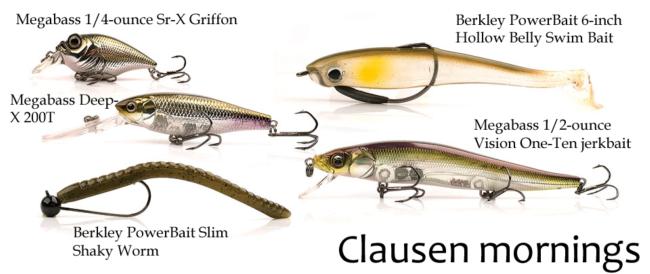
“It’s amazing how many 4- and 5-pound bass you can catch on that little Griffon in clear water,” Clausen said.
Fall mornings are times to focus on points near the mouths of large creeks. There, bass that typically suspend and are hard to catch in the middle of the day will often plunder shad and other baitfish that gang up in the morning.
A crankbait is a good way to tempt those fish. Clausen makes long casts in 6 to 8 feet of water with a Megabass Deep-X 200T, which actually dives 8 to 10 feet. The presentation becomes a fast and steady bottom grind, and when doing so, there’s no reason to take your time.
“The bass see so well in clear water that you don’t need to hit them on the head to get a strike,” Clausen said. “If I don’t get bit in four or five casts, I’m out of there.”
One of the fun things about this morning bite is that it’s common to catch two or more fish from the same point since bass feed in packs in the fall. That’s how it went when Clausen fished the Walmart FLW Series event at Clarks Hill Lake in October 2008, where he doubled and tripled in the morning on several points throughout the tournament.
“I’d slow down and fish the points with a worm later in the day,” Clausen said. “But I kept moving in the morning. That was the best time to catch the big fish.”
Rocky lakes
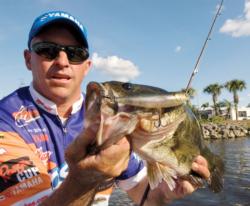
Wendlandt learned to bass fish on Lake Travis in Texas, which is a rocky, highland reservoir. That is why he consistently catches fish on similar waters, such as Beaver Lake, where he has won two Walmart FLW Tour events.
He also knows how to pick out the best rocky structure throughout the season and where fish will be on that structure in the morning.
During the prespawn phase, hit chunk-rock points and banks first thing in the morning with crawfish-patterned Storm Wiggle Warts or shad-patterned Rapala Shad Raps. Wendlandt prefers to throw them on 45-degree banks, rather than steeper bluff banks, using parallel casts to the water’s edge. The retrieve should be quick so the crankbaits continually bump off stumps and rocks.
If bass aren’t active enough to chase crankbaits, morning bites can also be tempted with a jerkbait. Wendlandt prefers a 1/2-ounce shad-patterned Lucky Craft Slender Pointer 112MR. Work the lure perpendicular to rocky points and over sharp drops on the edges of flats for suspended bass, but don’t get too fast when chasing sluggish fish.
“Even though you’re moving and covering water, you still have to let that lure pause for a few seconds between jerks,” Wendlandt said.
Once bass are on the beds, it’s not necessarily time to abandon prespawn fish. The early morning hours are great for casting a crankbait or jerkbait for prespawn bass that have yet to move up. Or walk a stick bait for postspawn bass guarding fry or cruising in the shallows.
Topwater lures remain productive in the summertime, when Wendlandt targets early morning bass mainly with stick baits, poppers and buzzbaits. Clear-lake bass are often active in mornings in summer before tapering off midday, and not much gets their attention more than a noisy topwater splish-splashing on the surface. Wendlandt fishes anywhere he can see schooling bass activity or baitfish working around boat docks and over flats.
Finally, stick with topwater lures right into autumn mornings. But once the water temperature drops into the 50s, Wendlandt switches to a homemade 3/8- or 1/2-ounce tandem, willow-leaf spinnerbait with a shad-imitation skirt or a square-billed crankbait, such as the Lucky Craft Fat CB BDS 4.
Wendlandt used a crankbait in October 2006 to finish third in the Walmart FLW Series BP Eastern Division event at Lake of the Ozarks. He was midway back in the creeks, holding his boat over 10 to 20 feet of water and bumping the crankbait quickly over the bottom in the shallows. Bass were feeding on big shad, and the shallow crankbait was a perfect match.
That finish, along with the tournament experiences shared by Morehead and Clausen, are only three examples of when a morning bite led to a day’s, or a tournament’s, success. Like the pros, be aggressive in the morning in search of active bass. It just may change the entire outcome of your day on the water.
